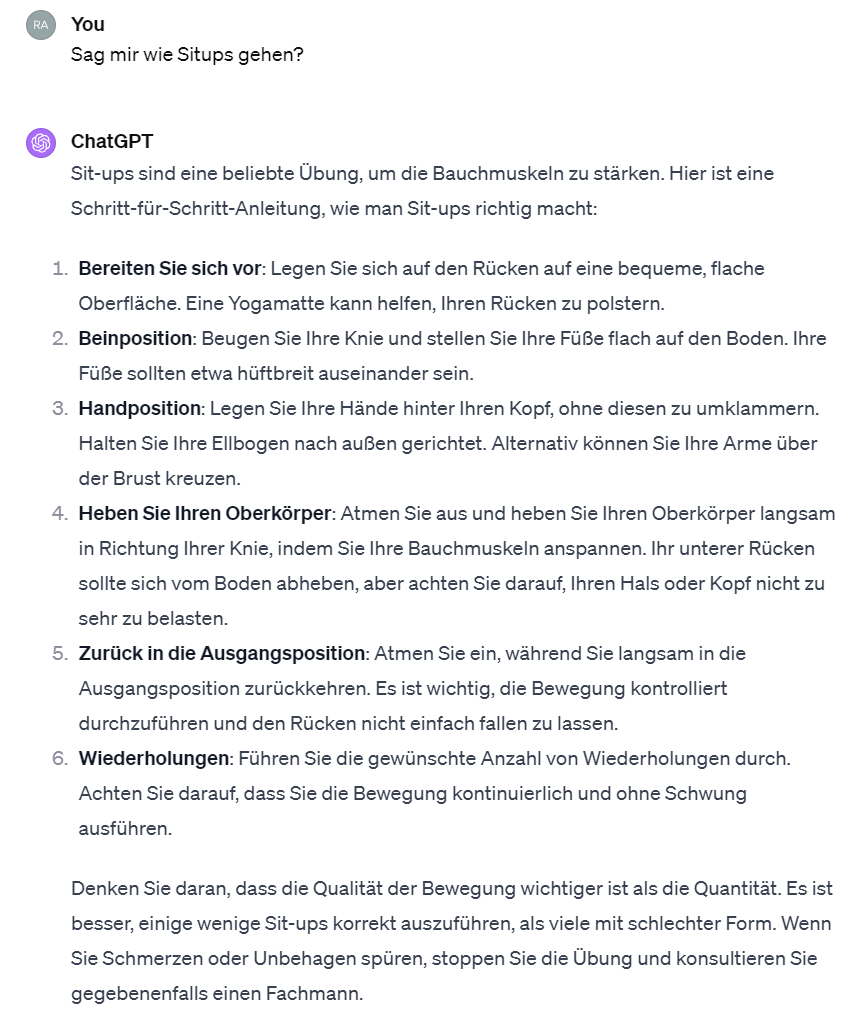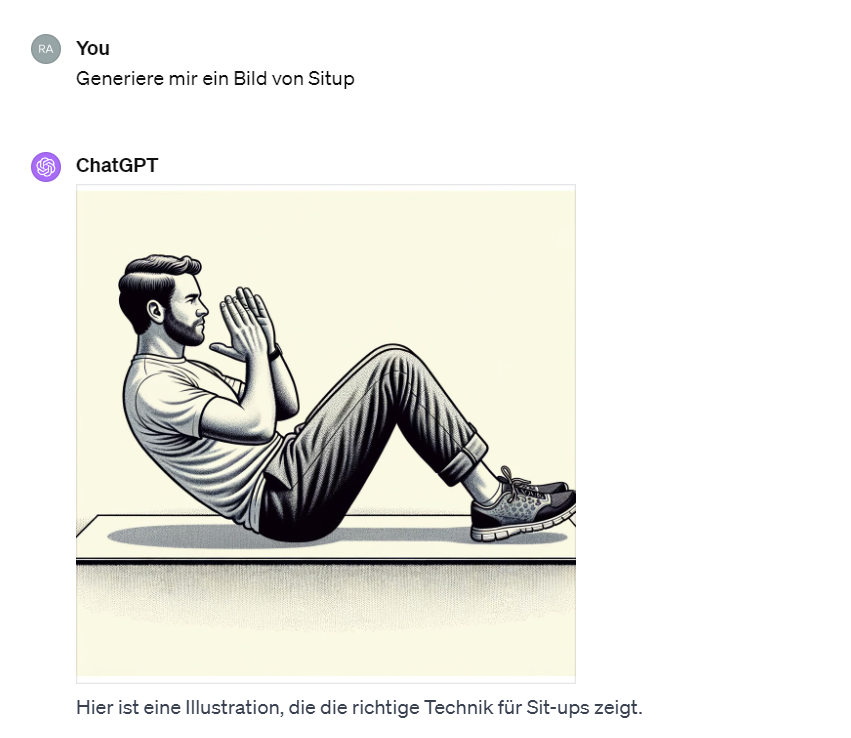Workshop Persuasion for Chatbot Design
The following content (summary) was generated by an LLM.
- Workshop Overview: A summary of a workshop held on 2023-12-06, focusing on chatbot design for persuasive and elicitive communication. Key participants included M.D., G.S., and R.W., with input from psychotherapist I.V. and A.S.
- Key Design Elements: Discussion on including health literacy and educational content, using incremental behavioral adjustment strategies ("frequency over duration"), and implementing sustained motivational reinforcement for effective persuasion in chatbot interactions.
- Psychological Support and Persuasive Communication: Strategies for chatbot design post-relationship formation to offer psychological support and integrate persuasive communication tactics effectively.
- Additional Insights: Insights from M.D. on the importance of 'warmth' and 'competence' in chatbots, along with a review of "Persuasion: Theory and Research, Third Edition" for practical implementation in chatbot messaging and strategies.
- Enabling and Trigger Mechanisms: Discussion on enabling mechanisms like providing instructions and adapting style, along with trigger mechanisms for reminders and nudges in chatbot interactions.
This note is about the persuasiveness for chatbot design, as well as a summary of the workshop that took place between M.D., G.S. and R.W. on 2023-12-06.
Content of the workshop:
- Design content for the chatbot
- Provide input as sample interactions with the chatbot
- (possibly with further notes on what is important in these examples)
- Theories on persuasive and elicitative communication (between people)
- Brainstorming & Discussions
Perspective from applied psychology/psychiatry
The following points are design elements (?) for the chatbot to achieve persuasion to some extent, many of them are suggested by I.V., who is a psychotherapist. A.S. also contributed a few.
Inclusion of health literacy and educational content
This is rather straightforward. One important factor for persuasiveness in terms of the chatbot design is to provide accurate but uncomplicated health information. If the user is well-informed about the situation, she/he will most likely be less worried and motivated to “be persuaded”.
The health literacy agent in the DC’s design serves the same purpose, the question is how we realize this. From what I understand, we have a knowledge lexicon as an external database. This should already be integrated into the chatbot, right?
Resources
Most of the following papers talk about the importance of psychoeducation.
- Clinical Practice Guidelines for Psychoeducation in Psychiatric Disorders General Principles of Psychoeducation
- Psychoeducation as an Opportunity for Patients, Psychiatrists, and Psychiatric Educators: Why Do We Ignore It?
- How can psychoeducation help in the treatment of mental disorders?
- Psychoeducation: Process, Benefits, and Effectiveness
Frequency over duration: incremental behavioral adjustment with time-sensitive scheduling
The idea behind “frequency over duration”, is that the behavioral change should take place in small increment steps. In the context of therapy planning, e.g., the HCP can encourage the patient to walk for 5 mins at the beginning to make the change happen, then increase the duration of the walking over time. The location of walking can also be arranged in this way, such as first walk at home, then the staircase, then in the yard/garden, then to the park/forest nearby…
The idea emphasizes the importance of doing instead of being demotivated by some big goals at the start. “You should walk 1 hour each day” could be ambitious but not carried out in reality. How to implement this into chatbot needs further research.
Resources
- Making health habitual: the psychology of ‘habit-formation’ and general practice
- Micro Habits in Psychotherapy: A New Frontier in Mental Health Treatment
- How Are Habits Formed? The Psychology of Habit Formation
- Psychology of Habit
- Reinforcement, Reward, and Intrinsic Motivation: A Meta-Analysis
Implementation of sustained motivational reinforcement
“Motivational reinforcement” can be as simple as phrases like “You are doing good!”, “You did a good job!”, or “I’m proud of you!”. Such repeated expressions could help users build confidence and stick to the current therapy plan. So this concept itself is very intuitive, and should be easy to implement to chatbot (or not?).
Resources
- A Review of B. F. Skinner’s ‘Reinforcement Theory of Motivation’
- Reinforcement, Reward, and Intrinsic Motivation: A Meta-Analysis
- Motivation and Autonomy in Counseling, Psychotherapy, and Behavior Change: A Look at Theory and Practice 1ψ7
- A Controlled Examination of Motivational Strategies: Reviewing Positive Consequences for Goal Achievement, Negative Consequences for Undesired Behavior, and a Relaxation Exercise
Providing psychological support after relationship formation
“After relationship formation” talks about an ideal/predicted situation, in which the user has used the chatbot for a certain period, suggesting that the chatbot is consistent and competent enough to make the user have interactions with it frequently and build relationships upon. Based on this assumption, the chatbot should have the ability to provide some psychological support in case the user is seeking it. Building relationships with users is challenging for a chatbot, but it is certainly an interesting goal to achieve.
Resources
- Relationship and Alliance Formation Processes in Psychotherapy: A Dual-Perspective Qualitative Study
- First Encounters in Psychotherapy: Relationship-Building and the Pursuit of Institutional Goals
Persuasive communication
As the name suggests, this section is about persuasive communication. As for the question, of how to incorporate persuasive communication into the chatbot, still needs further research…
Resources
- Persuasive Communication: Source, Message, Audience
- Persuasive communication: The case of marketing
- Resource for Developing Persuasion Communication Systems: Key Variables, Techniques and Theories
- Persuasive communication in medical decision-making during consultations with patients with limited health literacy in hospital-based palliative care
Using Metaphor
This is suggested by A.S., to use metaphor to persuade. Metaphor from Psychology Today:
- When you communicate an idea with a metaphor, you light up people’s sensory and motor neurons.
- You also activate emotions, prompt aha moments, and reward your audience with a sense of social interaction.
- When you’re trying to persuade, you might first seek a good story, but you may do better to seek a metaphor.
Input from M.D.
There is evidence that “warmth” and “competence” of the chatbot help schwede_can_2023 and personalization of messages oh_systematic_2021. This seems to be well integrated into the design of the chatbot (by explicitly mentioning these aspects in the prompts).
–> Personalization: sure, the context information is always passed to chatbot; “warmth” and “competence”: not sure.
- Can Chatbots Be Persuasive? How to Boost the Effectiveness of Chatbot Recommendations for Increasing Purchase Intention
- A systematic review of artificial intelligence chatbots for promoting physical activity, healthy diet, and weight loss
Insights from the book “Persuasion: Theory and Research, Third Edition”
#TODO: check out the following chapters
- Chapter 9 - The Study of Persuasive Effects
- Chapter 10 - Communicator Factors
- Done by 21.01.2023 –> check Persuasion: Theory and Research
Chapter 11 “Message Factors” reviews research concerning the effects that selected message variations have on persuasion. The message factors discussed are grouped into three broad categories: message structure and format, message content, and sequential-request strategies.
Some factors can (already) be implemented in the chatbot.
- Message Factors
- Message structure and format
- Conclusion omission (implicit)
- Recommendation specificity (explicit)
- Narratives
- a narrative is a story, that is, a depiction of a sequence of related events
- –> metaphor?
- Prompts
- A prompt (reminder) is a simple cue that that makes behavioral performance salient and hence can trigger the behavior.
- Message content
- Consequence desirability
- One common way of trying to persuade people is by appealing to the consequences of the advocated action.
- One-sided vs two-sided messages
- which presents supporting arguments but ignores opposing ones
- which discusses both supporting and opposing arguments
- There appears to be no general difference in persuasiveness between onesided and two-sided messages.
- –> one-sided and two-sided also mentioned in schwede_can_2023
- Gain-Loss framing
- A gain-framed message emphasizes the advantages of undertaking the advocated action;
- “If you wear sunscreen you’ll have attractive skin when you’re older”
- a loss-framed message emphasizes the disadvantages of not engaging in the advocated action.
- “If you don’t wear sunscreen you’ll have unattractive skin when you’re older”
- Threat appeals
- Threat appeals (also called fear appeals) are messages designed to encourage the adoption of behaviors aimed at protecting against a potential threat.
- Consequence desirability
- Sequential-request strategies
- Foot-in-the-door
- The FITD strategy consists of initially making a small request of the receiver, which the receiver grants, and then making the (larger) target request.
- –> Frequency over duration?
- Door-in-the-face
- The DITF strategy turns the FITD strategy on its head. The DITF strategy consists of initially making a large request, which the receiver turns down, and then making the smaller target request.
- Foot-in-the-door
- Message structure and format
Resources
Input from G.S.
- Parametrization –> #TODO: need further information, check transcription?
Motivation
- Angstmanagement
- weiß Du was die Konsequenz ist wenn Du X nicht machst?
- Belohnungsmanagement
- Wenn Du weiter so machst, siehst Du so cool aus…
- Motivation
- Mit Bildern; „Soll ich Dir mal Zeigen wenn ich Dir Zeige…“; Links geben
- –> Bilder mit GPT-4/SD generieren, siehe unten
- Kurz vor Verzweiflung – Anpassung an Gegenüber – im Prompt spezifizieren, dass GPT soll den emotionalen Zustand identifizieren und darauf achten bei Formulierung der Nachrichten
- –> nested states in PROMISE?
- Was ist die Rolle von Humor („Soll ich Dir ein Witz erzählen?“)
Enabling
- Show-what: Was wäre der Umweg? Workarounds.
- Show-how: Instruktionen zu Exercises; wie geht richtig „Spazieren“:
- generell oder
- mit Rückgriff auf Daten aus der Beratung
- „Magst Du vielleicht noch mal hören, wie man richtig Kniebeugen macht?“
- –> Beispiel, siehe unten
- Stil-Anpassung
- –> Prompt Engineering: Person (is this still a thing?)
- Videos von bestimmten Übungen verlinken
- Zeig ein Beispiel für X
- Self-efficacy nachrichten “Du hast bereits das gelernt”
- –> check out self-efficacy
- Fixe Pläne abmachen (leute auf etwas “nageln”) – und als Grund für Trigger nutzen: “Soll ich Dich dran erinnern?”
- Der Chatbot kann Hinweise geben, wo man spazieren sollte… Vorschläge machen wohin man gehen sollen.
- Chat macht Angebote an den Patienten: “Soll ich Dir X erklären?”, “Soll ich Dir ein Bild von X zeigen?”, “Soll ich Dich morgen an X erinnern?”, “Soll ich Dir einen Vorschlag machen, wohin Du gehen sollst?”, “Soll ich Dir einen Witz über Kniebeuge erzählen?”
- –> führt zu open-ended, überraschenden Dialogen.
Example of “motivation” with “enabling”: explain the way to do sit-ups:

GPT-4 can generate images accordingly:

Or tell a joke, which is part of “motivation”:

Trigger
- Gibt es andere Trigger als erinnern zum gewissen Zeitpunkt.
- Von Patienten ausgehen: “erinnere mich dran, dass ich spazieren gehen möchte”.
- Im Gespräch: “ach, wolltest Du nicht X machen?”, “wolltest Du nicht mal abnehmen?” – transactive memory system – agent als transactive memory, wenn man etwas delegiert an den Chatbot, dann ist man viel Bereiter dafür wenn jemand interveniert;